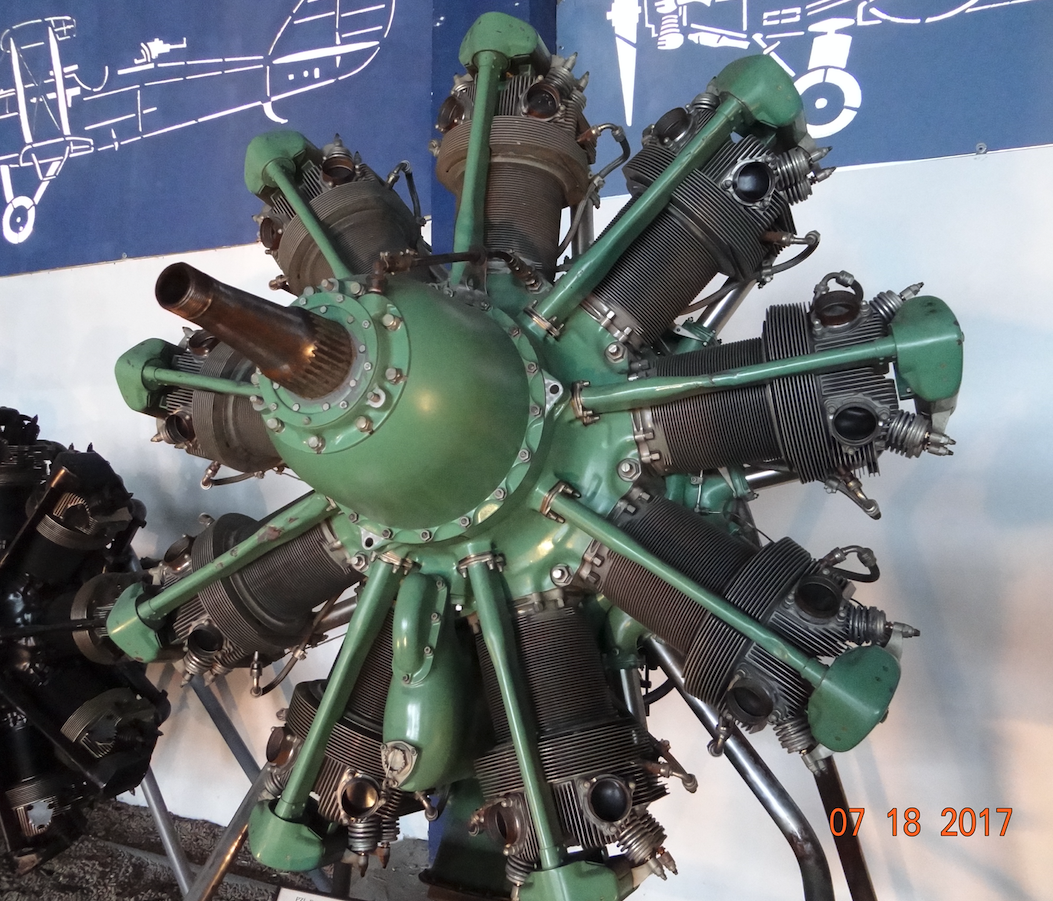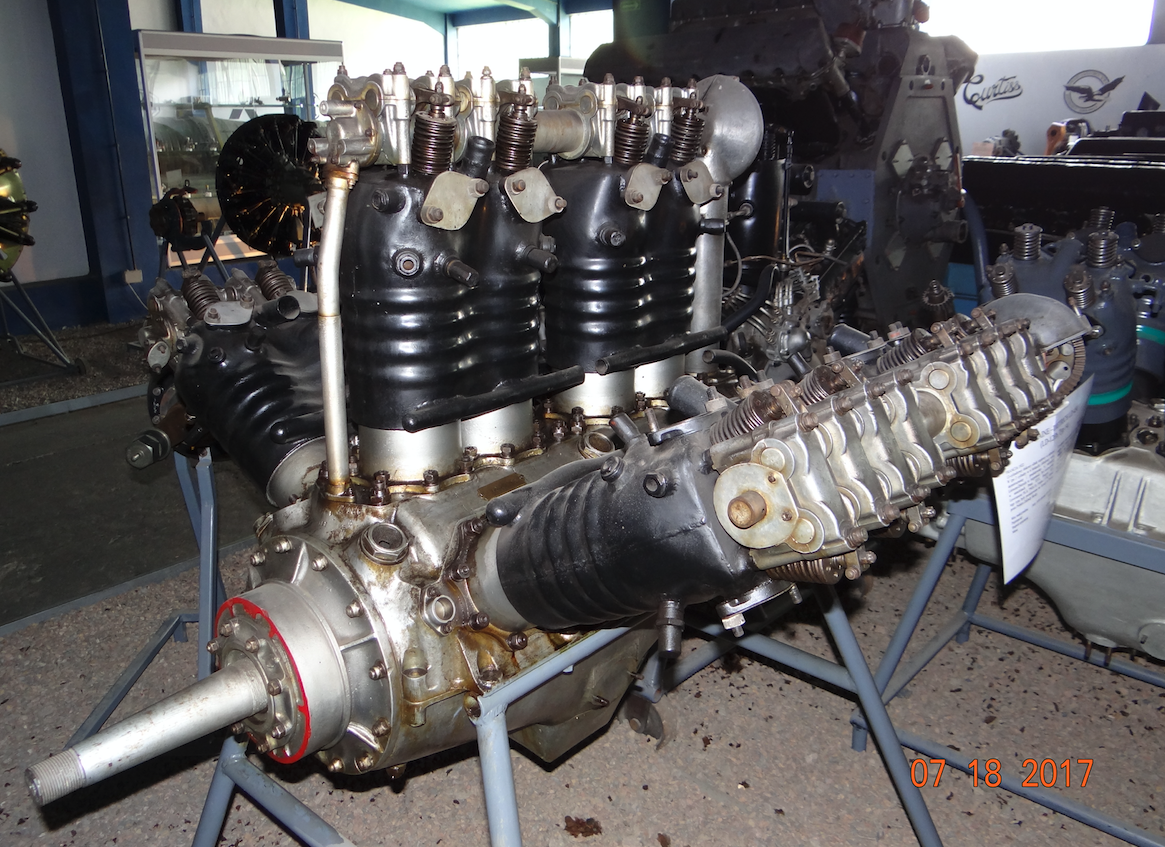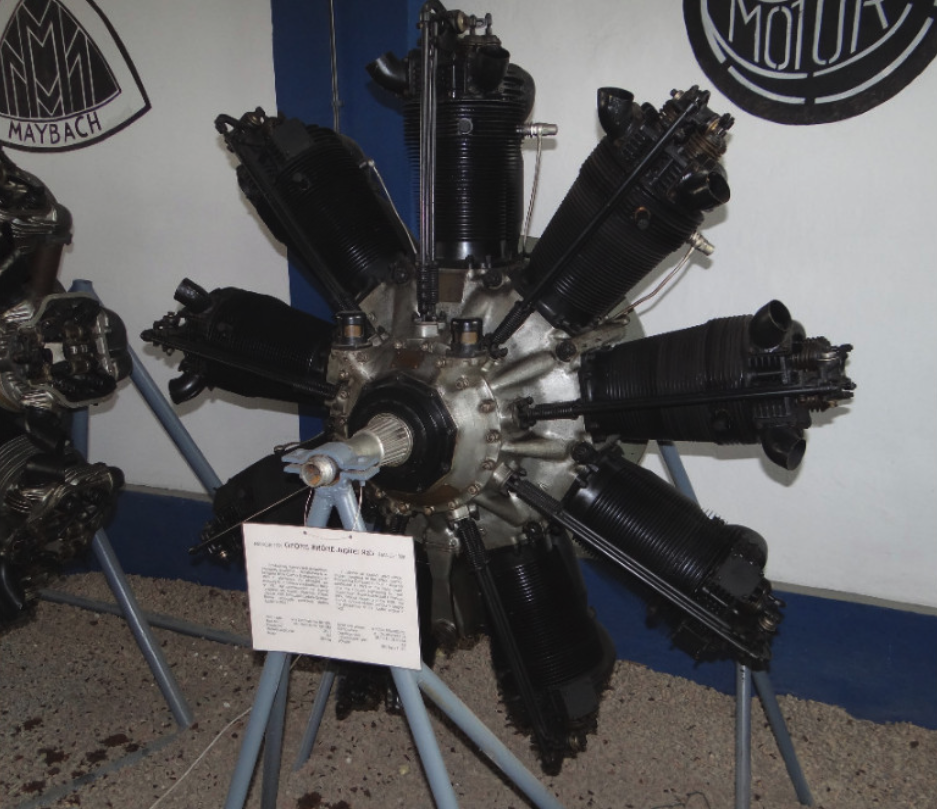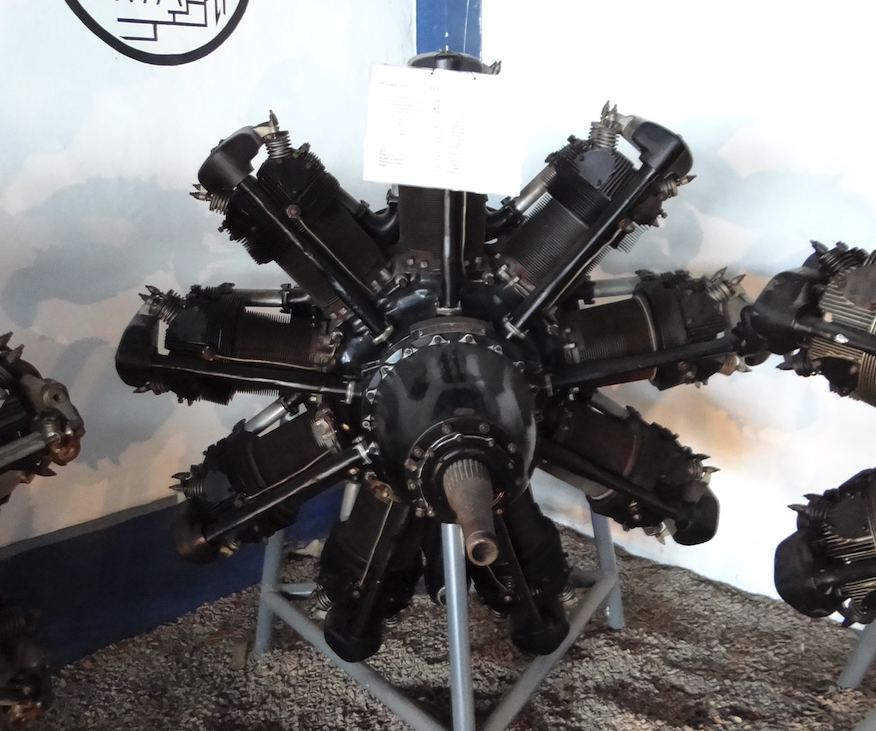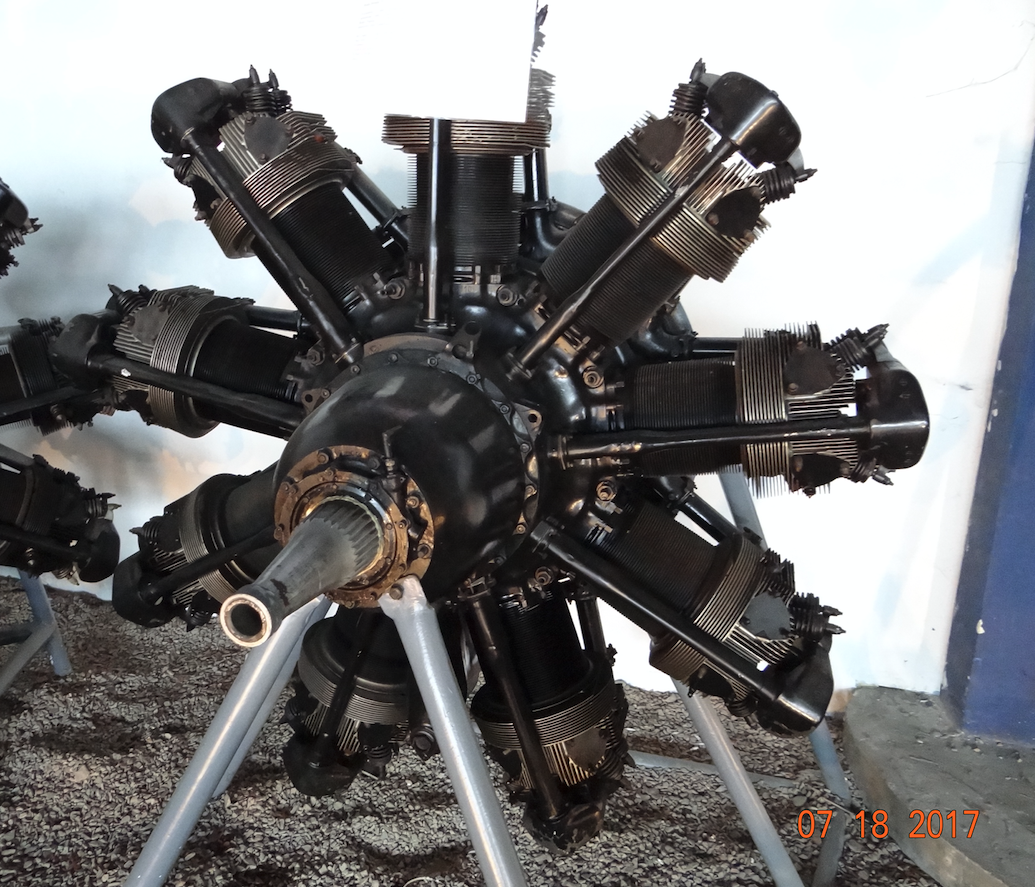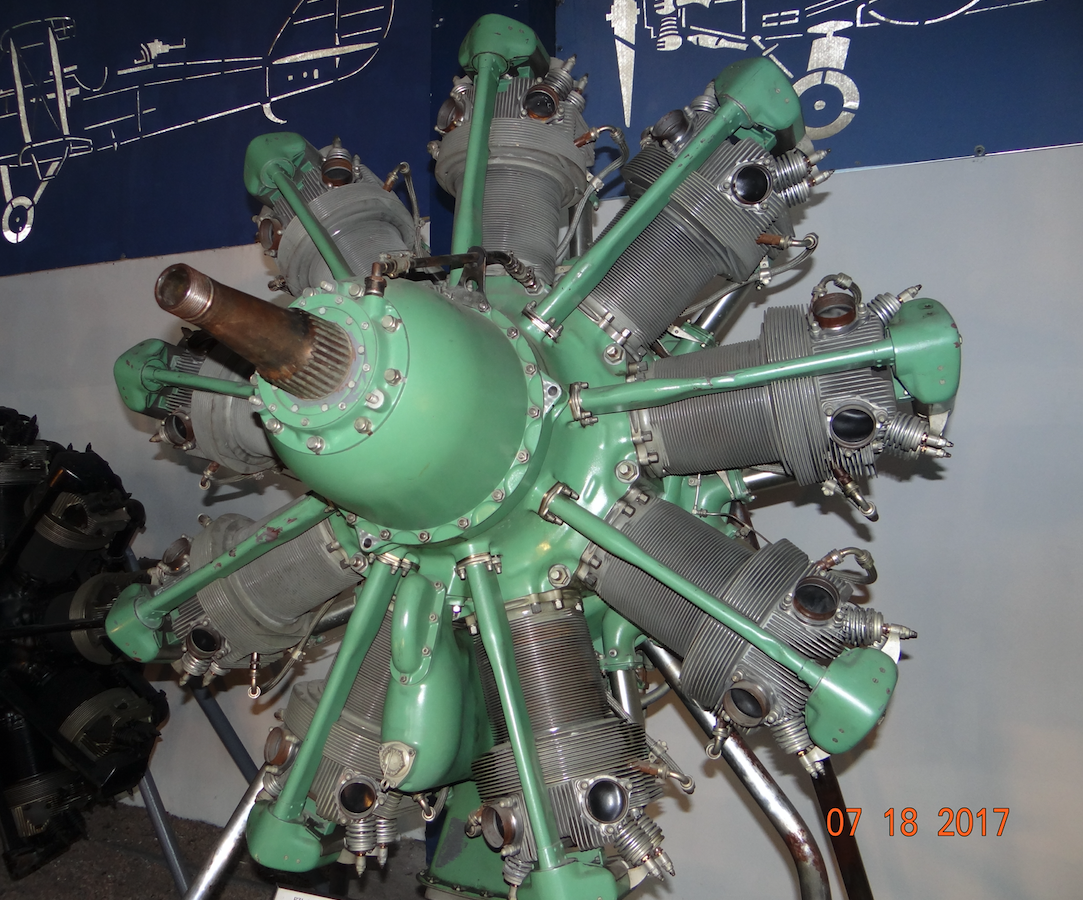Kraków 2016-05-20
Internal combustion, piston, radial engine.
Production in Poland.
Star engines, developed by Polish constructors, did not meet most of the needs of Polish Aviation. We had talented designers, but we lacked the technical background, and most of all, the funds. Remember that developing a good aircraft engine takes a long time (4-6 years) and requires a lot of testing. Significant involvement of the steel, metal and machine industries is necessary. This was the case in the 20s of the 20th century and it is so one hundred years later. Developing an engine and achieving the desired power does not mean that the engine is successful. It can be heavy, fuel hungry, or have problems maintaining optimal operating temperature. It can be emergency and have a short service life. There are many problems.
In the years 1926-1928, the Aeronautics Department of the Ministry of Military Affairs correctly assessed that we would not be able to construct good engines in Poland in the coming years. A decision was made to purchase a license for the Polish Skoda Works established in 1926. In June 1926, the newly appointed head of the IV Air Navigation Department, Colonel Ludomił Rayski, approached the foreign motor factories: Lorraine-Dietrich, Hispano-Suiza, Issota Francini, Rolls-Royce, Bristol and Skoda with a proposal to take over the Frankopol company. At that time, tax breaks and other amenities were guaranteed for a period of 10 years and the Ministry of Military Affairs purchased at least 1,500 engines during this period. Some foreign labels were not interested. Others showed minimal interest. Only the Skoda concern, which expressed its readiness to produce engines in the territory of the Republic of Poland, showed greater interest. However, they set the following conditions: a 10-year framework contract, the plant will not have a foundry and a forge (components will be imported from Czechoslovakia), independent selection of foreign contractors, obtaining government guarantees and not encumbering Frankopol with debts.
At this point, it is worth paying attention to other, non-technical aspects of problems related to the construction of aircraft engines in Poland. Skoda was largely controlled by the French. The plants in Czechoslovakia were well developed and were not damaged during the Great World War. Czechoslovakia was keenly interested in maintaining its production potential, in the face of a sharp decline in the demand for military and aviation equipment. They offered a rich set of metallurgical prefabricates in the form of rolled and forged products. The Czechs themselves came to Poland looking for a market for their products. They were interested in starting a car, agricultural machinery and electric motor factory. They immediately noticed the lack of adequate infrastructure and difficulties in attracting educated employees. They resigned from the proposed locations in Tarnów, Rzeszów, Kielce and Dęblin. Possible employees with high technical potential were only in Warsaw. That is why the Czechs proposed their own engineering staff. However, in this case the Polish Army protested. We didn’t want foreign workers. However, the Czechs also drew attention to large and not fully thought-out purchases of aviation equipment in France and large reductions in the mobilization plans of the Polish Army, which could bode badly for the volume of future production.
Decisions on the purchase of a majority stake in Frankopol by Skoda and the commencement of the production of aircraft engines were made at the very tops of the Polish Administration. The agreement was signed on November 15, 1926, in the presence of President Ignacy Mościcki, Marshal Józef Piłsudski, General Aleksander Litwinowicz, Colonel Ludomil Rayski. This is how the Polish Skoda Works were established. Colloquially, it was called Polska Skoda.
Interestingly, the Skoda plants had little experience in the production of aircraft engines. It is true that already in 1909, the Laurin et Klement Works in Mlada Bolesław built the first aircraft engine. However, it was the production of individual engines for individual orders of aviation enthusiasts. Serial production of the Lorraine-Dietrich 12 engine in Czechoslovakia started only in 1924. The lack of experience in this field turned out to be beneficial for the Polish side, because Poland could buy the licenses of the engines it wanted, tested in flights, and not random designs, which were at the beginning of the program. Purchase of engine licenses provided Poland with the stable development of the Polish Aviation Industry.
The contract with the Czech Republic and the establishment of Polskie Zakłady Skoda were very beneficial for buyers, but also quite well secured the interests of the Republic of Poland. The unreliable company Frankopol was replaced by a company with extensive experience in trade, production and capital. The deal to come was a good safeguard for the security of the country. Exceeding the deadline (November 30, 1927) for launching the plant was to invalidate the contract, return the advances paid to Frankopol and compensation in the amount of $ 100,000. The Polish authorities have also created a gate for the future termination of the contract and getting rid of the Czechs: Delaying deliveries three times to the Polish Army or starting production for a foreign country.
Engines produced by Polskie Zakłady Skoda were more expensive than others, because the plant had to pay off debts to private creditors over a period of 10 years. Within 10 years, the plants were to: build 1,500 aero engines, overhaul another 1,500 units and provide spare parts for 15% of the global order. As engine prices were suspected to be exorbitant, an arbitration board was set up immediately. The commission’s decisions were binding.
The first activity of the Skoda concern was the construction of the plant, which was run by Czechoslovak and Polish companies. The works were carried out in two shifts. They were supervised by Eng. Antoni Novotny. In October 1927, machine halls with an area of 2,000 m2 were completed. A water tower, a water supply system, a boiler room, a central heating system and a sewage system were built. In April 1928, warehouses, a railway siding, a forge and a canteen for employees were put into use. After the company Frankopol, the plant took over about 280 machine tools. Some of them were used, but a large part had to be sold because they were bought for the production of airframes, not engines. New machine tools were bought from English companies: Sleeper and Hartley, Alfred Herbert, Webster & Bennet, James Archdle and in other countries. In the following years, the machine park was partially replaced.
The preparation of the engineering staff for work has also started. Several workers were sent to the Skoda plants in Plzeň and Mlada Bolesław as well as to the Lorraine-Dietrich plant in Luneville near Nancy in western France. In 1927, the factory employed 200 people, and in the following years it employed 1,500 people. In 30 years, the plant was in the top ten plants of the machine industry in terms of machinery and employees.
One of the first designs of the Polish Skoda Works was the Polish engine, Eng. Stanisław Nowkuński marked G-594 "Czarny Piotruś" with a power of 100 HP (88 kW), at 1,940 rpm. It was a 7-cylinder star. Its production was carried out in the years 1928-1931. Work on the engine began in the fall of 1928. The engine had a capacity of only 5.94 liters and at the same time achieved extremely high parameters. It was the result of the use of high pressure (compression ratio) and the use of a compressor (supercharger). Fuel consumption was low, only 240 g / km / h. The use of the compressor resulted in the fact that the engine had good parameters even at the altitude of 7,000 m. The engine tests were carried out on a Bartel MB-4 training aircraft. They lasted about 100 hours. A visual inspection of the engine shows minimal wear. On June 11, 1931, an order was received from the 1st Division of the General Staff for the serial G-594 "Czarny Piotruś" engines, the production of which was to begin after the approval process was completed. However, work on the engine continued. The engine from the 7-cylinder became the 9-cylinder and received the designation G-760, which means that it has a capacity of 7.60 liters. The engine had a power of 260 HP with a weight of 137 kg, which gave almost 2 HP from one kilogram of construction, which was an excellent result. This engine was also discussed in the previous Section.
In 1926, the IV Department of Air Navigation decided to undertake licensing purchases. At the beginning, a license was purchased from French Lorraine-Dietrich engines with 400 hp and 450 hp. In December 1926, an agreement was signed between the Skoda company and the licensor Lorraine-Dietrich. As a loan, Lorraine-Dietrich supplied connecting rods, cylinders, timing gears and cranksets. In the period 1928-1930, the Polskie Zakłady Skoda plant built 300 Lorraine-Dietrich 12 engines with a capacity of 450 HP. In later years, only repairs of these engines were performed and spare parts were supplied. The cooperation with Lorraine-Dietrich was terminated due to the switch to the production of air-cooled engines. It was a very good decision, and its initiator was, among others, Colonel pilot Ludomił Rayski.
Description for the photo: The engine had several markings: Lorraine-Dietrich LD 450 (LD-12Eb, Type 14). The engine was developed in France in Argenteil in 1922. It is a "W" in-line engine. The cylinders were placed two cylinders in 6 blocks. The engine is liquid-cooled. It has a maximum power of 450 hp at 1,850 rpm. 24.4 liter capacity. The compression ratio is 6.1: 1. Engine weight 435 kg. The engine was produced in Poland. The engine was installed on the following airplanes: Potez XXV, Breguet XIX, Levavasseur PL.8, PWS-10, Fokker F.VII.
In 1930, the Polish side insisted on starting a foundry of engine components at the Ursus plant. However, the development of this program was slow. Good quality karters could not be made. As a result, engine deliveries were delayed. That is why the Polish Army decided to build its own foundry. The works started in 1933.
The year 1933 was important in the history of the Polish Skoda Works in Warsaw. This year, for the first time in history, the plant prepared complete documentation, instructions and instrumentation for the new Bristol Mercury engine. Until now, most of these tasks have been carried out in Pilsen.
Engines Pegaz.
Further Polish license purchases were very accurate. An agreement was signed with the British company Bristol. At that time, it was a common opinion that French engines are of good design, but made a little worse. And British technology was highly valued. The contract with the Bristol company concerned not only the Bristol Jupiter engine, but also all subsequent development structures. These purchases made it possible to fully meet Polish needs in the first half of the 1930s. Jupiter engines for fighter planes, and later Mercury. Pegasus engines for reconnaissance bombers and bombers.
The talks with Bristol were conducted through its representative, Gnome-Rgone. That is why Bristol Jupiter engines in Poland were called Gnome-Rgone Jupiter. The contract was signed on August 8, 1929. At the end of May 1930, karters manufactured in Bristol were ordered. It was caused by failure to meet the reisms of parameters in the trial batch of karters. Neither the Ursus nor Pilzno plants were able to cope with this. Huta Bismarcka also initially failed to obtain the required quality. The first engines from the Polish Skoda Works were delivered in May 1932. The catalog price of the engine was PLN 90,000. In the period 1932-1934, 170 PZL Bristol Jupiter F.VII engines with 485 hp were built. On the production line, the engine was replaced with a Bristol-Mercury engine.
The Bristol Jupiter engine is a 9-cylinder single star engine built at the end of the Great World War by the Bristol Airplane Company. Initially it was called Cosmos Jupiter (Cosmos Jupiter). As a result of refinements and changes, it has become one of the best aircraft engines of its era. The license has been sold to many countries. It was the first fully successful supercharged engine. Jupiter was one of the first engines to use four valves per cylinder. The standard engine had a compression ratio of 6.3: 1. The cylinders were made of steel forgings, and the heads were made of aluminum alloys. Later, the heads were also made of steel forgings. A reducer was also used. In 1925, design of the successor to Jupiter (Jupiter) began in 1927, Bristol Mercury. A shorter stroke of the pistons has been used to increase rotational speed and therefore power. The use of this technology in the original Jupiter engine size led to the Bristol Pegasus variety. In 1926, a test of the Jupiter engine mounted on the Bristol Bloodhund was carried out. The engine worked without failure 225 hours and 54 minutes and the plane covered 25,074 miles.
The Bristol Jupiter engine was manufactured under license in fourteen countries. Most of these engines were built outside the UK in France, where the production was carried out by the Gnome-Rhone company under the designation Gnome-Rhone 9 Jupiter. The engines were built in Japan (Nakajima), Italy (Alfa Romeo), Czechoslovakia (Walter), CCCP (Shvetsov M-4) and many other countries. It’s hard to count how many engines were built. About 11,000 units were produced at the Alfa Romeo plant alone.
The efforts to start the production of PZL Bristol Mercury engines in Warsaw resulted from the far-sighted policy of the leaders of the Polish Army and the desire to have an appropriate engine for a fighter plane. The decision to start the production of PZL Bristol Mercury IV S2 engines was made in October 1932, in the office of the Chief of General Staff, General Janusz Gąsiorowski. It resulted from the necessity to provide fighter planes with a power unit of 600-800 HP.
It is worth noting here that the Bristol company avoided revolutionary design solutions, which in other companies was manifested by engines with a capacity of 1,000 HP. The delay was made up by Bristol in 1938, but it was too late for the Polish Aviation Industry. It should also be remembered that the 1,000hp engines had a very short service life in the early 30s.
From the end of 1932, Polskie Zakłady Skoda cooperated directly with the Bristol company, without the intermediary of the Gnome-Rhone company. This improved information flow and reduced collaboration costs. The plant in Ursus continued to participate in the program. However, of the 19 compressor covers, only 6 were adopted. Other castings also had high substandard rates. The main reason was their porosity, and thus the seepage of oils and greases. The castings were started by the English steelworks High Duty All. The first PZL Bristol Mercury engines were delivered in September 1933. Production was 7 units per month and reached the level of 20 units per month. About 200 engines were built. The catalog price of the Bristol Mercury V S2 engine (595 HP) was PLN 90,000.
PZL Pegaz VIII is an improved Bristol Siddeley engine, produced at the Engine Factory No. 1 in Warsaw-Okęcie under license. It replaced the inferior Pegaz II engine in production. In the years 1936–1937, over 350 engines of this type were produced in Warsaw. The PZL Pegaz VIII engine was used in the following planes: PZL.23 B Karaś, PZL.30, PZL.42.
PZL Pegaz VIII engine data: 9-cylinder star, 28.7 liter capacity. Compression ratio of 6.0: 1. Propeller speed reduction 0.655. Engine weight 470 kg. 705 hp maximum power at 2,600 rpm. Nominal power: 665 HP at 2,250 rpm.
The PZL Pegaz XX engine was designed for the PZL.37 Łoś and PZL.46 Sum aircraft. This engine powered the most modern Polish Military Aviation aircraft in 1939. The PZL Pegaz XX engine was manufactured by the Engine Factory No. 1 in Warsaw-Okęcie under license. The PZL Pegaz XX engine was equipped with a compressor and reducer and a Cloudel-Hobson AVT 80BZ carburetor by Motolux. The engine drove a De Havilland Hamilton Standard adjustable, two-stage, three-blade, metal propeller. This engine was on display in the Polish pavilion at the world exhibition in New York in the summer of 1939. After the outbreak of World War II, it remained in the USA in private hands. In 2006, the exhibit was donated to the collection of the Polish Aviation Museum in Krakow by Mr. Witold Dewicki from Fowlerville, Michigan.
Engines Whirlwind.
Together with the Bristol Jupiter engine license, licenses were purchased for American Whirlwind engines for training and liaison aircrafts. Wright Whirlwind R-790 engine with 220 hp (162 kW). The history of the engine dates back to 1921, when Lawrance Aero Engine Company began working on the engine for the US NAVY. The Navy has determined that an air-cooled engine is much more beneficial to marine aircraft than a liquid-cooled engine. The owner of the engine had no production capacity. The big engine manufacturers, Wright and Curtiss, were not interested because they said their liquid-cooled designs were very good. At that time, US NAVY, the main recipient of Wright engines, blackmailed the manufacturer that it would look for another supplier. In 1923, Wright was forced to purchase a license for the Lawrance J-1 engine, which was renamed Wright J-1. Over time, the entire Lawrance Aero Engine Company was absorbed by the Wright concern. At that time, new engine variants were created that consumed me fuel and were more reliable. Only the first engine model was called the Whirlwind (whirlwind). Subsequent models were coded from J-2 to J-5, and received the new designation R-790. This name stands for the engine capacity, which is 788 cubic inches or 12.91 liters.
The R-790 engine has 9 cylinders, 12.91 liter displacement, 11.4 cm bore, 14.0 cm stroke, air-cooled, wide-spaced valves for better cooling, and tappets and rocker arms are shielded for protection from dust and rain.
The reliability of the engine made it widely and willingly used. The engine was used to power the Spirit of St. Souis, Fokker Trimotor and Ford Trimotor. The engines were produced by Wright Aeronautical Corporation, and in Europe, the Skoda plant in Czechoslovakia and the Polish Skoda plant. In Poland, the engine was used, among others, in the following planes: Bartel BM-5, PWS-26, Lublin R.XIII.
Preparations of the engine under the general name of Wright J-5 Whirlwind, with a capacity of 220 HP, for production in Poland at the Polish Skoda Works, were made in 1927. The Polish Army purchased five engines from the USA. After the analysis, it turned out that without external help it would not be possible to start the production of these engines in Warsaw. The reason was the metal alloys used, which were not available in Poland. More specialized machine tools were also purchased. The workshop drawings, based on the documentation, were prepared in Pilzno. The first engines were handed over to the Polish Army in November 1929. Initially, 7 engines were produced per month, to reach 25 units per month. The engines were delivered to the Polish Army, LOT Polish Airlines and Czechoslovakia. During the period 1929-1933, 260 engines were produced. The unit catalog price was PLN 42,500. The quality of Polish engines was very high. During their use, no accident occurred due to their fault. Nevertheless, other aircraft manufacturers in Europe preferred to import these engines from the major US manufacturer.
Other engines.
Almost simultaneously with the work on the G-594 "Black Peter" engine, the development of the G-1620 "Mors" engine began. The model was the American Pratt & Whitney Wasp Junior engine. The demand for a new engine was reported by the Polish Army and LOT Polish Airlines. The army needed a new engine for Lublin R.XIII liaison and observation aircraft. LOT Polish Airlines a more powerful and reliable engine for commercial aircraft. The lead constructor was Eng. Witold Łoziński. In mid-1932 it was reported that the engine prototype would be ready in March 1933. The deadline was very tight and in fact impossible to meet. Nevertheless, it was decided to launch the production of the first series of 25 units.
In the period 1927-1934, the cooperation of the Polish authorities with the heads of the Polish Skoda Works was correct. In February 1934, the tendency to nationalize the factory began to crystallize. Proponents of this solution were the head of the Army Administration, General Dr. Felicjan Sławoj-Składkowski and the pilot general Ludomił Rayski. This situation was not only caused by the actions of the Polish side. The Skoda concern in 1931 established close cooperation with the CCCP government. Many of the PZL board members were pro-Bolshevik. The background was not only economic matters. Czechoslovakia echoed the political events in Germany. Extensive cooperation began in 1933. It was nothing more than the de jure of Czechoslovakia towards the CCCP. The same steps were taken by France, which on May 2, 1935 signed the Franco-Soviet treaty on mutual assistance. The same was done by Czechoslovakia by signing a similar Czechoslovak-Soviet agreement on May 16, 1935. The military of both countries began to visit each other. In this situation, the visit of General Ludomil Rayski to Prague, planned for June 19, 1935, made no sense. The dispute over Cieszyn arose again. The Polish consul in Ostrava was expelled. Breaking the framework agreement with the Skoda concern had political, economic and security reasons. It should also be remembered that several Polish subcontractors were starting to cope well with the performance of semi-finished products: plants – Babitt, Ursus, Mieszczeński, steelworks – Bismarcka, Królewska, and Pokój. The main reason for the termination of the contract was failure to meet the delivery deadline three times from the plants in Warsaw. The management of the Polish Skoda Works unsuccessfully tried to save the situation. Part of the management was replaced. However, neither side wanted to prolong the dispute. It was decided to submit a proposal to end the cooperation and buy the plant in Warsaw. An independent valuation committee has been established. The final purchase transaction of the plant for the amount of PLN 9 million was concluded on May 6, 1935 at the notary’s office of Stefan Benedykt in Warsaw.
Interestingly, the cooperation with the Skoda concern has not definitively ended. At that time, the Czechs already had two more factories in Poland producing electric cables, electric motors and transformer stations.
The whole matter was dealt with by the Economic Committee of Ministers. The following facts were presented during the committee meeting. One engine at Skoda cost PLN 100,000, while the same engine in the UK cost PLN 50,000. In the near future, the Polish Army must obtain 1,000 engines, the cost of which will be PLN 80 million for Skoda, and PLN 42 million abroad. The difference in price is due to the use of outdated equipment, long production time, and a lack of willingness to cooperate with Polish companies. The production capacity of the plant begins to be insufficient to meet the needs of the Polish Army, even in peacetime. The Czech concern did not guarantee secrecy, which exposed Poland to a definite weakening. It is possible that these arguments were exaggerated. Nevertheless, the actions of the Polish Authorities were absolutely right in the face of the growing political tensions in Europe.
The achievements of Polskie Zakłady Skoda in the Polish Aviation Industry were significant. Licensed production of Lorraine-Dietrich, Wright J-5, Bristol (Jupiter, Mercury) engines was launched. The production of the Polish G-560, G-760, G-1620 and "Foka" engines was launched. A good team of workers, laborers and engineering was trained. Technological standards were introduced. Technologies for the production of new metal alloys have been developed. Systems of endurance and operational tests of engines were developed. Precise measuring devices have been developed. Without the help of the Czechs, it would take us a few more years to reach the current level.
Written by Karol Placha Hetman

